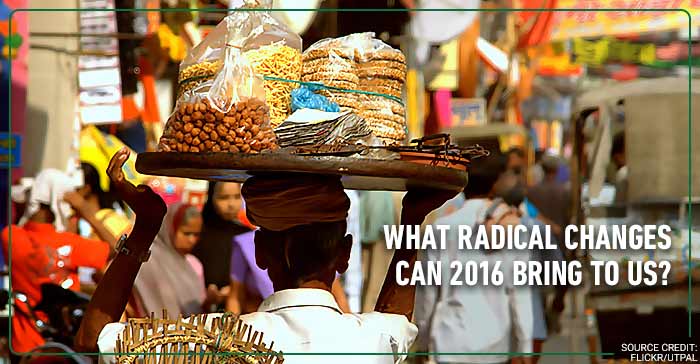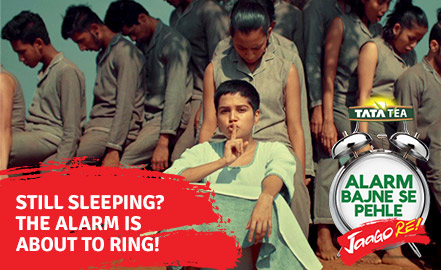Highlights of the year 2015 in India

The Republic Day Parade
This year’s Republic Day parade saw the US President, Barack Obama gracing the function as our country’s first ever international chief guest. This event also saw an all-women contingent march down Rajpath, making it the first time ever that we saw women from armed forces partake in Indian history.
The Agni-5 Test
Agni-5 is an intercontinental ballistic missile developed by the Defence Research and Development Organisation (DRDO) of India. On January 31st, India had successfully launched Agni-5, its longest range ballistic missile, for the third time off the Odisha coast. The missile was launched from a canister from Wheeler Island, giving it higher road mobility.
Union Budget 2015
The 2015-2016 budget was presented by Finance Minister Arun Jaitley on February 28th. It saw the abolishment of wealth tax, service tax was raised from 12.36% to 14% and the education sectors saw rise in new schemes, institutions and scholarships.
National Electoral Roll Purification and Authentication Programme
The National Electoral Roll Purification and Authentication Programme (NERPAP) is voter registration project of the Election Commission of India. It will link the elector's Photo Identity Card with the Aadhar number of the registered voter. It is aimed to create an error-free voter identification system in India, especially by removing duplications. The project was launched on March 3rd.
Beyond Visual Range missile, Astra
India's Beyond Visual Range (BVR) air-to-air missile Astra was successfully test fired from a Sukhoi-30 fighter aircraft on March 19th. The missile, which was fired off Odisha coast near the Integrated Test Range at Chandipur, Balasore, has been indigenously designed and developed by the Defence Research and Development Organisation (DRDO).
Section 66(A) declared unconstitutional by SC
The Supreme Court declared Section 66(A) of the Information Technology Act on March 24th, terming it "vague" and "unconstitutional". The law has been used in a number of instances to crack down on those who posted critical or divergent political views.
The purpose of Section 66(A), according to the annotations of the law, reads, "Punishment for sending offensive messages through communication service, etc”. Many activists, freedom of speech and internet freedom campaigners expressed their opinions that the act was being aimed solely at quietening differences of opinion on the internet.
Operation Raahat: India Rescue Mission in Yemen
Operation Raahat was an operation of the Indian Armed Forces to evacuate Indian citizens and other foreign nationals from Yemen during the 2015 military intervention by Saudi Arabia and its allies in that country during the Yemeni Crisis.
The evacuation by sea started on 1 April 2015 from Aden port. The air evacuation started by Indian Air Force and Air India on 3 April 2015 from Sanaa. More than 4640 Indian citizens in Yemen were evacuated along with 960 foreign nationals of 41 countries. The air evacuation ended on 9 April 2015 while the evacuation by sea ended on 11 April 2015.
“Give up LPG Subsidy” scheme
On April 5th, the Petroleum and Gas minister, Dharmendra Pradhan launched a scheme that urged rich Indian citizens to give up their Liquified Petroleum Gas subsidies, which will in turn help low income bracket citizens to be able to afford it.
First International Yoga Day
The First International Yoga Day was commemorated by the United Nations General Assembly on 21st June, a lot of groups in India held all day yoga camps. The event gathered a lot of international attention and India got its due credit for its long held ties with yoga.
Digital India launch
Digital India is an initiative by the Government of India to ensure that Government services are made available to citizens electronically by improving online infrastructure and by increasing Internet connectivity. It was launched on 1st July, by Prime Minister Narendra Modi. The initiative includes plans to connect rural areas with high-speed internet networks.
Launch of Astrosat
Astrosat is India's first dedicated multi-wavelength space observatory. It was launched on a PSLV-XL on 28th September.
Its scientific purpose is simultaneous multi-wavelength monitoring of intensity variations in a broad range of cosmic sources, monitoring the X-ray sky for new transients, sky surveys in the hard X-ray and UV bands, broadband spectroscopic studies of X-ray binaries, AGN, SNRs, clusters of galaxies, and stellar coronae studies of periodic and non-periodic variability of X-ray sources.
India's Intended Nationally Determined Contributions
In contribution to the United Nations Framework Convention on Climate Change, Indian environment minister Prakash Javadekar announced that India would reduce its emission intensity by 33-35% by 2030.
Uber rapist gets life imprisonment
The Delhi Uber rape case finally saw a verdict being given out 11 months after the incident, the rapist is to serve life imprisonment.
Induction of women as combat pilots
On 24th October, the Ministry of Defence approved its induction of women as combat pilots in the Indian Air Force.
Juvenile rapist in Nirbhaya case released
Amidst a lot of protests on 20th December, the juvenile rapist in the Nirbhaya case was released and given rehabilitation by the government.
India gets its own navigation system
Indian Space Research Organisation (ISRO) has developed what will now be known as India’s very own navigation satellite. It will provide two types of services - standard positioning service and restricted service.
Women in private sector to get maternity leave up to 26 weeks
In a recent report, the central government has decided to raise the maternity leave private sector employees from 12 weeks to 26 weeks.
Do you think we are prepared to see the year 2016 in a much more positive light? Let us know your thoughts in the comments below, you can also reach out to us on our Facebook page, or tweet to us @JaagoRe and even write a mail to jaagorein@gmail.com
In the months leading up to the election, Jaago Re released a 10-point Powerof49 Manifesto, and presented it to the leading political parties. Can we check to see if any of those demands have been met? If not, how do we, as citizens of the world's largest democracy assert our rights?
Can we take inspiration from movements around the world, where the youth, both men and women have gone up to every extent imaginable to ensure their rights are met with – or can they serve as an example for us to shake off our apathy and to introspect, question, organise and gather together to demand what's ours. Click to here to read the list of demands of the Powerof49 Manifesto.
Share this story on





